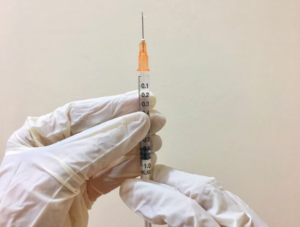
A numbing sensation can be a common side effect of dental procedures. It is caused by the use of anesthesia or novocaine, which numbs the area around the teeth and gums. This sensation can last for a few hours after leaving the dentist, but it will eventually wear off.
Some people may experience longer-term numbness, which could last for a day or two. It is important to keep in mind that everyone experiences numbing sensation differently and the length of time it lasts will vary from person to person.
What Dental Procedures Require Numbing?
When you go to the dentist, there’s a good chance that you’ll need to have some sort of numbing agent administered before any procedures can be done. This is because most dental work involves working in and around your mouth, which can be quite sensitive. Here are a few common dental procedures that require numbing:
Dental Fillings
When you get a cavity, your dentist will need to remove the decay and then fill the hole with a new material. This can be done using a local anesthetic, which numbs the area around the tooth so that you won’t feel anything.
Crowns
A dental crown is used to cover up a damaged or discolored tooth. The procedure involves making an impression of your tooth so that the crown can be made, and then bonding the crown to your tooth. Local anesthesia is often used for this procedure as well.
Root Canals
A root canal is necessary when the nerve of a tooth becomes infected. This can be quite painful, so your dentist will numbing the area before starting the procedure.
Extractions
If you have a tooth that needs to be removed, your dentist will first numb the area around it. This is because extractions can be quite painful, and you’ll likely feel some discomfort even with the numbing agent.
Dental Procedures That May Not Require Numbing
Though most dental procedures will require some sort of numbing agent, there are a few that may not. These include:
Cleanings
Dental cleanings are typically not painful, so they usually don’t require numbing. However, if you have sensitive teeth or gums, your dentist may use a local anesthetic to make sure you’re comfortable during the cleaning.
X-Rays
Dental X-rays are also not typically painful, though some people may feel a bit of discomfort from theX-ray machine. If you’re particularly sensitive, your dentist may use a local anesthetic.
As you can see, there are a variety of dental procedures that may require numbing. This is because most of these procedures involve working in and around your mouth, which can be quite sensitive. If you have a procedure coming up, be sure to ask your dentist if you’ll need to be numb before it starts.
How long does numbing last after you see the dentist?
Numbing typically lasts for a few hours after a dental procedure. However, it can vary depending on the individual and the procedure. If you have any concerns about how long the numbing will last, be sure to speak with your dentist. They can give you specific instructions on how to care for your mouth after the procedure.
Why do people experience different levels of numbness?
There are a few reasons why people experience different levels of numbness. The amount of anesthetic that the dentist uses can play a role, as well as the chemicals of your body. Additionally, your age and health can also affect how numb you feel. In general, younger and healthier people tend to feel less numbness than older or sicker individuals.
So, if you’re wondering why you felt more numbness than your friend during your last dental procedure, it could be due to any number of these factors. The best way to find out for sure is to ask your dentist. They’ll be able to give you more information on the anesthetic they used and how it could have affected your level of numbness.
How to Get rid of the Numbing Sensation in Your Mouth?
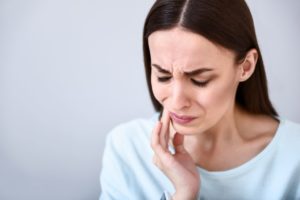
If you’re feeling numbness in your mouth, it can be uncomfortable. Here are a few tips for coping until the sensation wears off:
- Drink plenty of fluids to help flush out the numbing agent.
- Suck on ice chips or a hard candy to stimulate circulation.
- Gently massage your lips and gums to help increase blood flow.
If the numbness persists for more than a few hours to a day, or if you experience any other unusual symptoms, contact your dentist or doctor.
Can I Eat While My Mouth Is Numb?
While you can eat while your mouth is numb, it’s generally not a good idea. When your mouth is numb, you can’t feel anything, which means you could accidentally bite your tongue, cheek, or lip without realizing it. This could lead to painful injuries once the numbness wears off. Instead, it’s best to wait until the numbness completely goes away before eating. If you’re very hungry and need to eat something, stick to soft foods that don’t require much chewing and be very careful.
Should I Still Feel Pain After Numbing at the Dentist?
You shouldn’t feel pain after receiving a numbing agent at the dentist. The purpose of the numbing agent, like local anesthesia or novocaine, is to block the pain during the procedure. However, you might still feel pressure or movement, which is normal. If you do feel sharp pain or discomfort during the procedure, let your dentist know right away. They may need to apply more anesthesia to ensure you’re comfortable.
You may start to feel soreness from the procedure after your numbing agent has fully worn off several hours after the procedure is complete.
Conclusion
Numbing agents are used in a number of dental treatments to make sure you’re comfortable. After a treatment, most people experience some degree of numbness for a few hours. If you experience any unusual symptoms or the numbness persists beyond a day, contact your dentist .

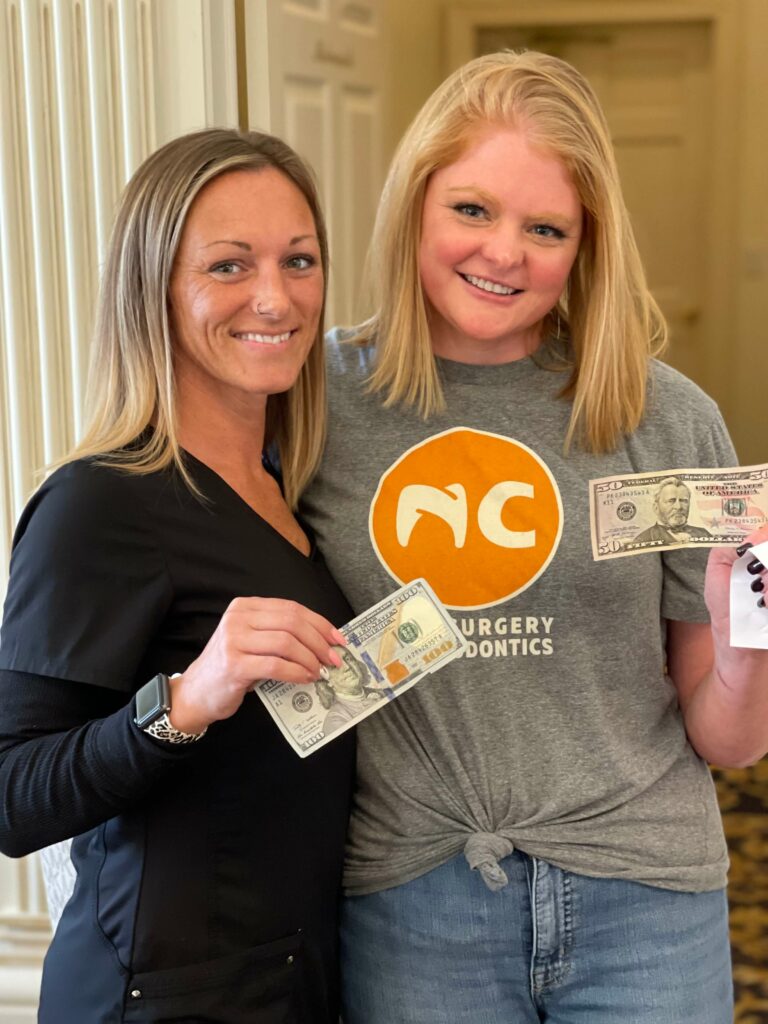






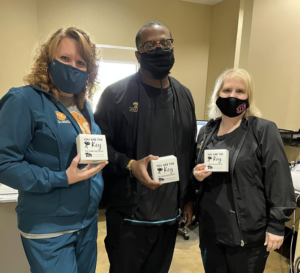
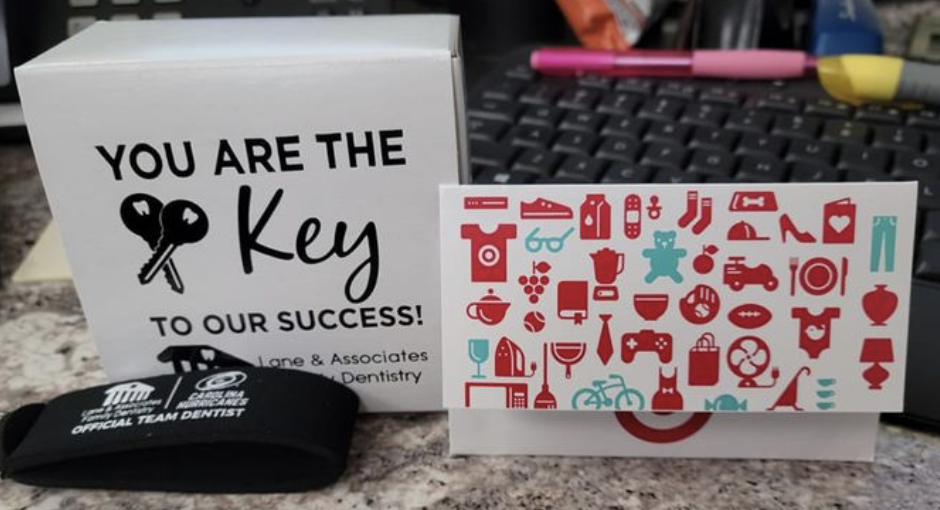
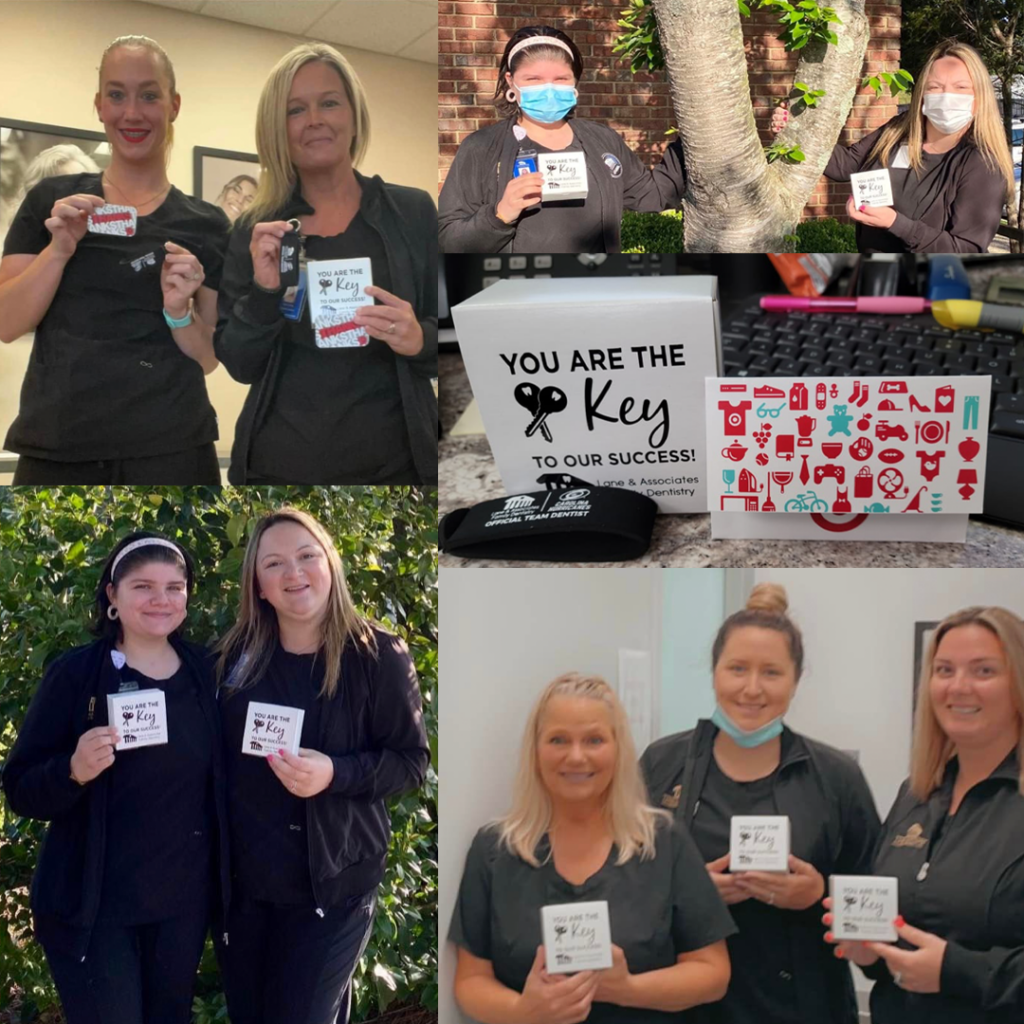

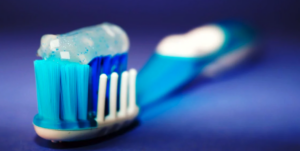
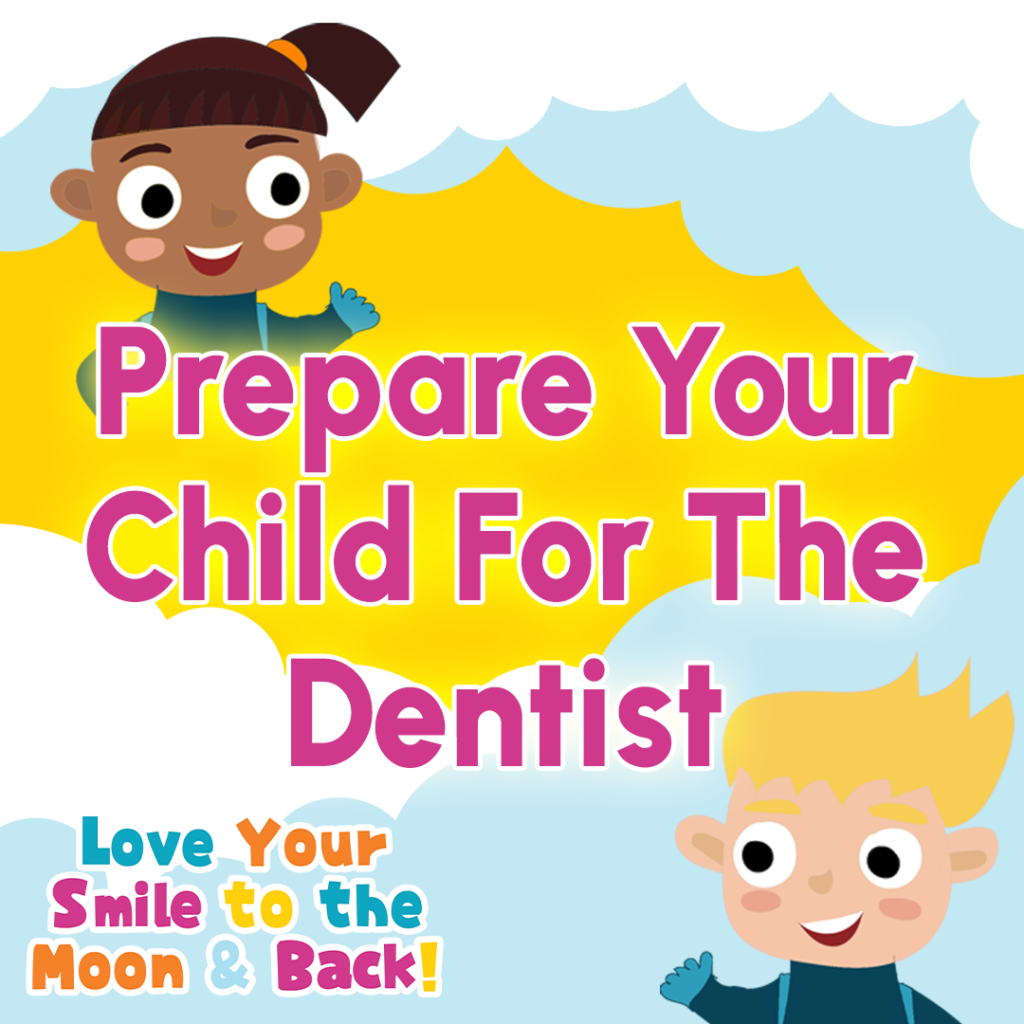 Daniel Tiger visits the dentist for the first time and learns all about the tools, plaque, and how the dentist cleans teeth. At the dentist, Daniel Tiger sings “When we do something new, let’s talk about what we’ll do.” Talking through what will happen at the pediatric dentist will make your child feel more relaxed. He even gets toy tools to use on his stuffed animal to feel more comfortable. This is a method you can use to help your child feel more comfortable before a dental cleaning, too.
Daniel Tiger visits the dentist for the first time and learns all about the tools, plaque, and how the dentist cleans teeth. At the dentist, Daniel Tiger sings “When we do something new, let’s talk about what we’ll do.” Talking through what will happen at the pediatric dentist will make your child feel more relaxed. He even gets toy tools to use on his stuffed animal to feel more comfortable. This is a method you can use to help your child feel more comfortable before a dental cleaning, too.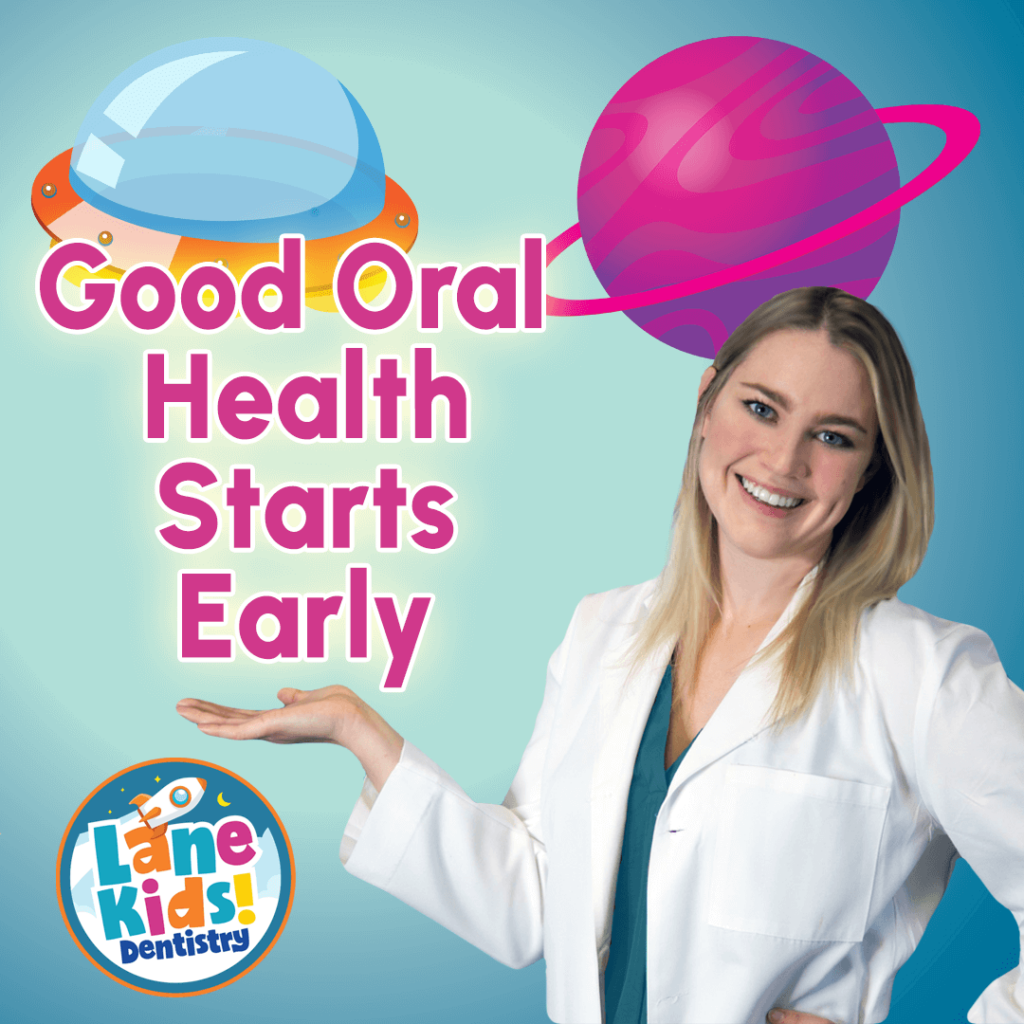 Rubbing your child’s gums and wiping your infant’s teeth with a soft cloth or gauze pad can go a long way before they begin with a toothbrush. This should be done after every feeding. Ease the pain of teething with a damp gauze pad or cool teething ring. Healthy gums produce healthy baby teeth! After the first tooth, use a very small amount of fluoride toothpaste (about the size of a single rice grain) and gently brush with a baby toothbrush.
Rubbing your child’s gums and wiping your infant’s teeth with a soft cloth or gauze pad can go a long way before they begin with a toothbrush. This should be done after every feeding. Ease the pain of teething with a damp gauze pad or cool teething ring. Healthy gums produce healthy baby teeth! After the first tooth, use a very small amount of fluoride toothpaste (about the size of a single rice grain) and gently brush with a baby toothbrush.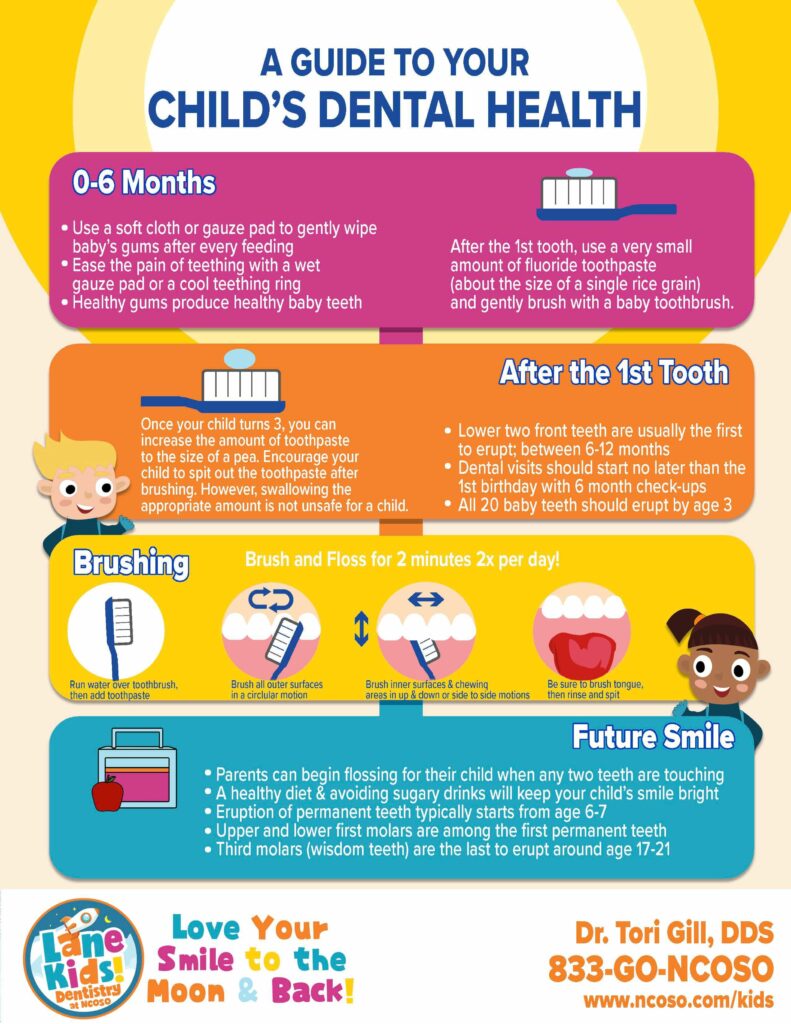




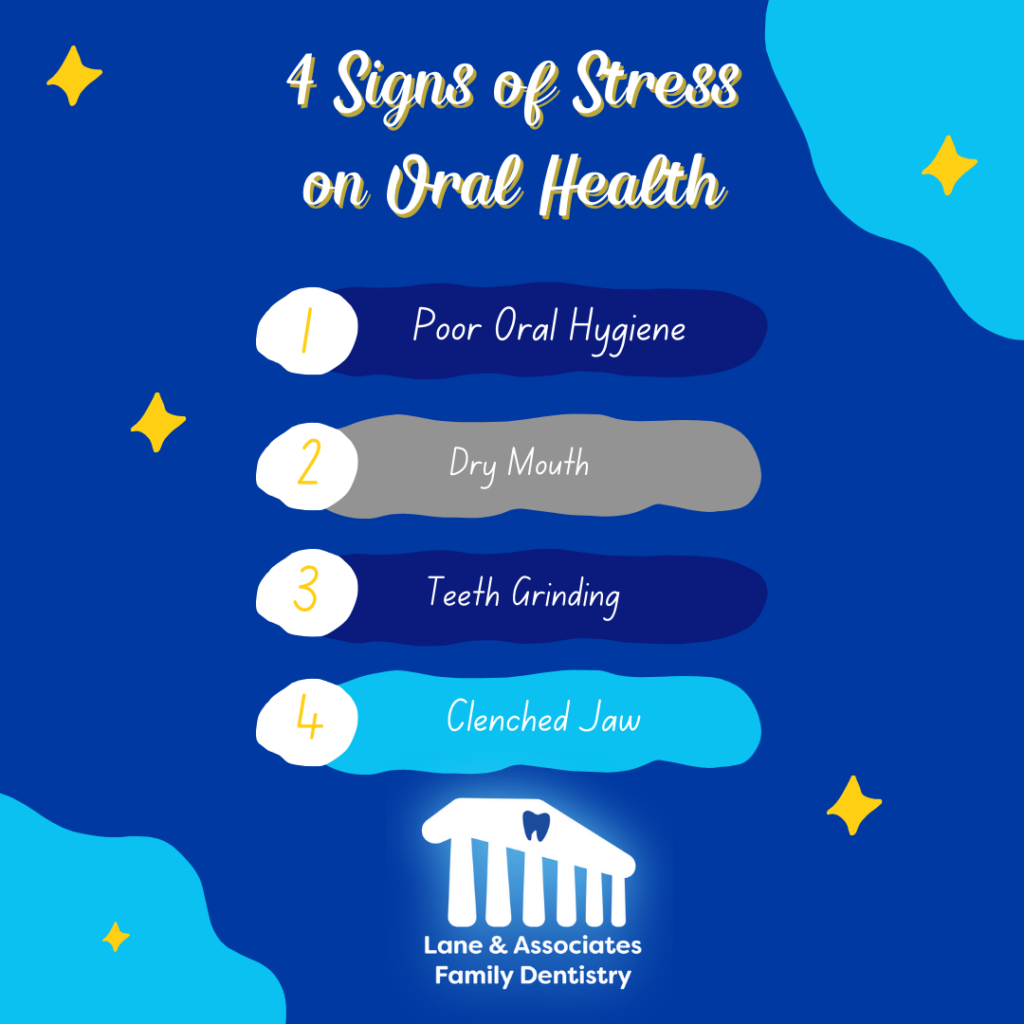 Poor Oral Hygiene: It’s easy to find yourself slacking on your oral hygiene routine when you’re stressed. You may find yourself brushing only once every day, if at all, or skipping flossing altogether. This of course can lead to plaque buildup, tooth decay, cavities, and potentially tooth loss.
Poor Oral Hygiene: It’s easy to find yourself slacking on your oral hygiene routine when you’re stressed. You may find yourself brushing only once every day, if at all, or skipping flossing altogether. This of course can lead to plaque buildup, tooth decay, cavities, and potentially tooth loss.